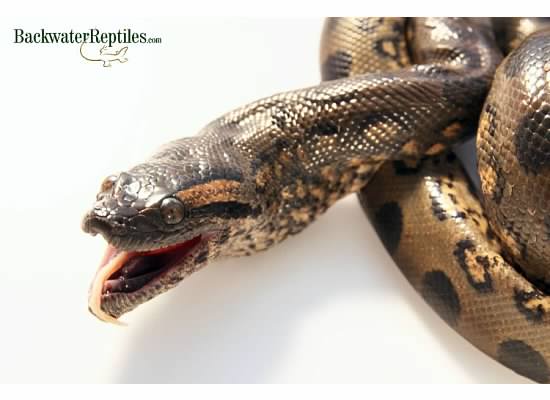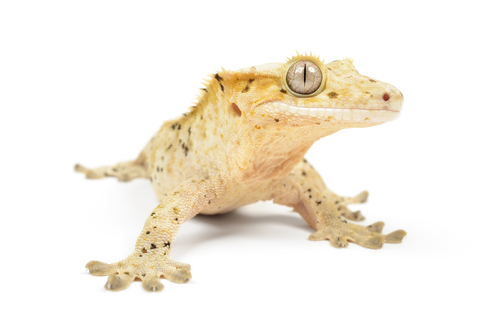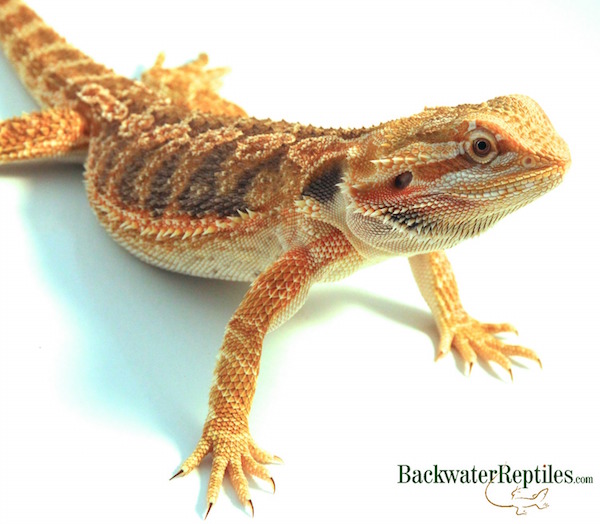We recently gave our customers and fans the opportunity to ask us anything about reptiles, amphibians, and invertebrates via our Facebook page. The results are in and now we are answering the top two questions.
Question One from R. Lorenz
“About what age do bearded dragons reach sexual maturity? I have two, a four year old male and a 6 month old – who up until last week was by all external signs a female. Very submissive, waving and bobbing and baring the throat, then all of a sudden it started displaying a black beard and the glands on its pelvis are just now starting to show (barely pin points that weren’t there before). The only time any aggression is shown to the adult beardie (who is not aggressive towards the baby at all other than defending himself) is in their mutual basking spot. Anywhere else in the house and the baby is still submissive. They have been together outside the cage (under supervision) and sleeping together since the baby was about 3 months. This just took us by surprise. I have heard of them morphing from one sex to the other, can that really happen?”
Question One Answer
In all of our combined experience at Backwater Reptiles, not a one of us has ever witnessed a Bearded Dragon (Pogona vitticeps) swapping gender. However, just because we haven’t seen it doesn’t mean it can’t happen.
In fact, studies like this one discussed in National Geographic show that gender of Beardies can be swapped based upon temperature…however, this phenomenon only occurred while the lizards were still in their eggs.
Bearded dragons generally reach sexual maturity by eight to twelve months of age. This is the point at which their genders can truly be distinguished. Breeders can use certain tricks to help distinguish between the sexes prior to the sexual maturity mark, but it is not always a guarantee that you will end up with the gender you had in mind if you purchase a lizard prior to the sexual maturity mark.
If the aggression between your male Beardies continues to worsen, sadly, you will have to separate them. You can always try offering a larger enclosure for the two lizards with two separate basking areas first though if you still want to try to keep them housed together.
Question two from M. Zimmerman
“Don’t get me wrong, my Columbian Rainbow Boa, Ssssasha is a very healthy snake. But would it harm my snake if I was to feed it thawed mice with a sprinkle of vitamin/calcium powder? Also would that make her grow quicker and better? Or is it best to just feed her regular thawed mice?”
Question Two Answer
Professional snake breeders and most hobbyists don’t consider it necessary to dust their feeders, whether the snake is eating mice, rats, or even larger mammals like rabbits.
It’s not likely going to harm Ssssasha if you feed her dusted mice, however it’s also unlikely that she will grow any faster.

Snakes get all the nutrition they need from the critters they eat and if you are feeding your Rainbow boa rodents, she should be getting all the proper vitamins and minerals she needs naturally.
Probably more important to Sssssasha’s growth rate and overall health is the amount that she is eating and the frequency that she is offered mice. Most snakes will eat twice a week when they are juveniles and as they mature, they can be fed once per week or even every other week depending on the species. The bottom line is that the more you feed your snake (and this is true of any species not just Columbian rainbow boas), the quicker it will grow.

Thanks to everyone who submitted a question to be answered. We’ll post another question and answer session in the future.






